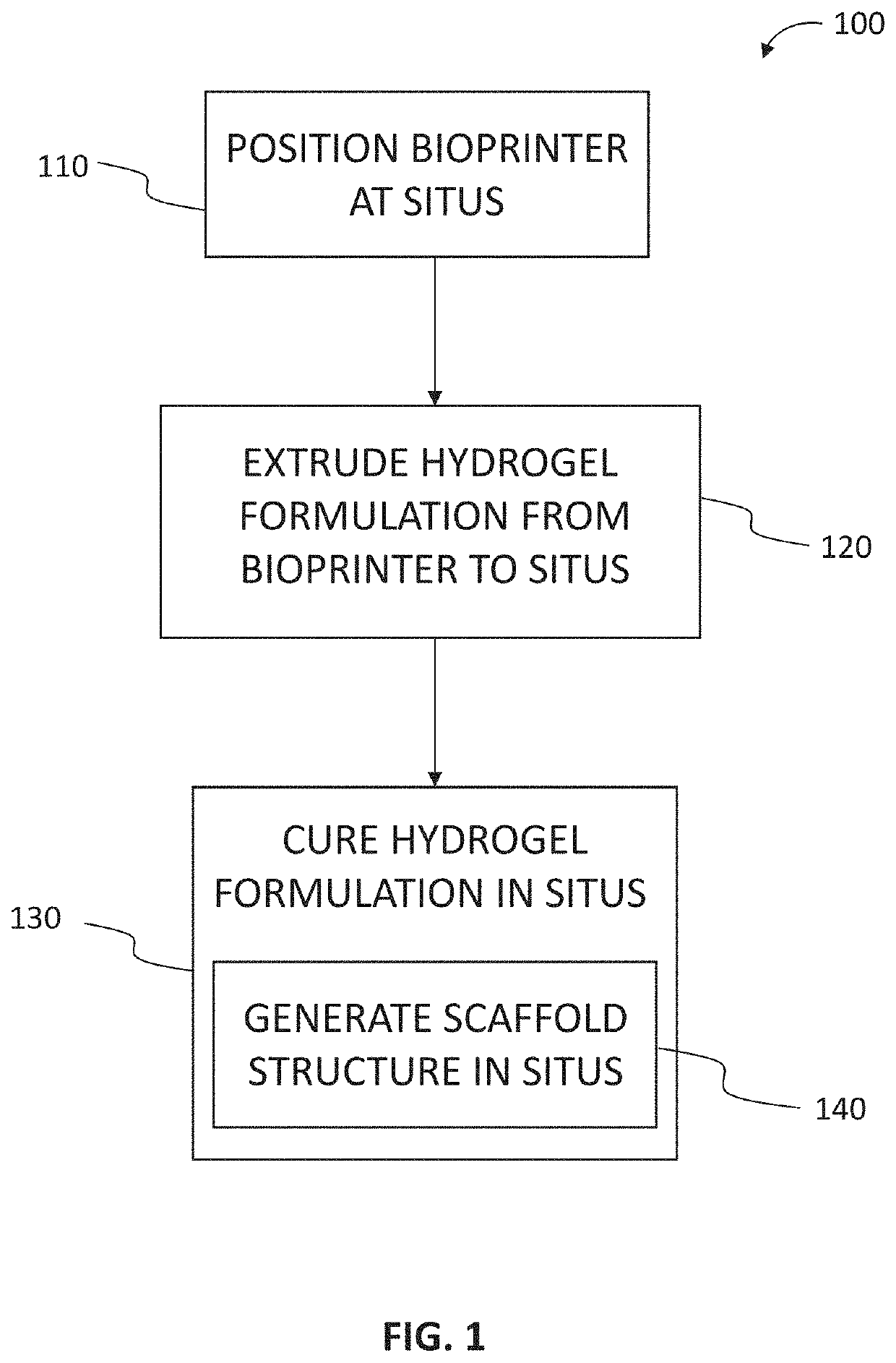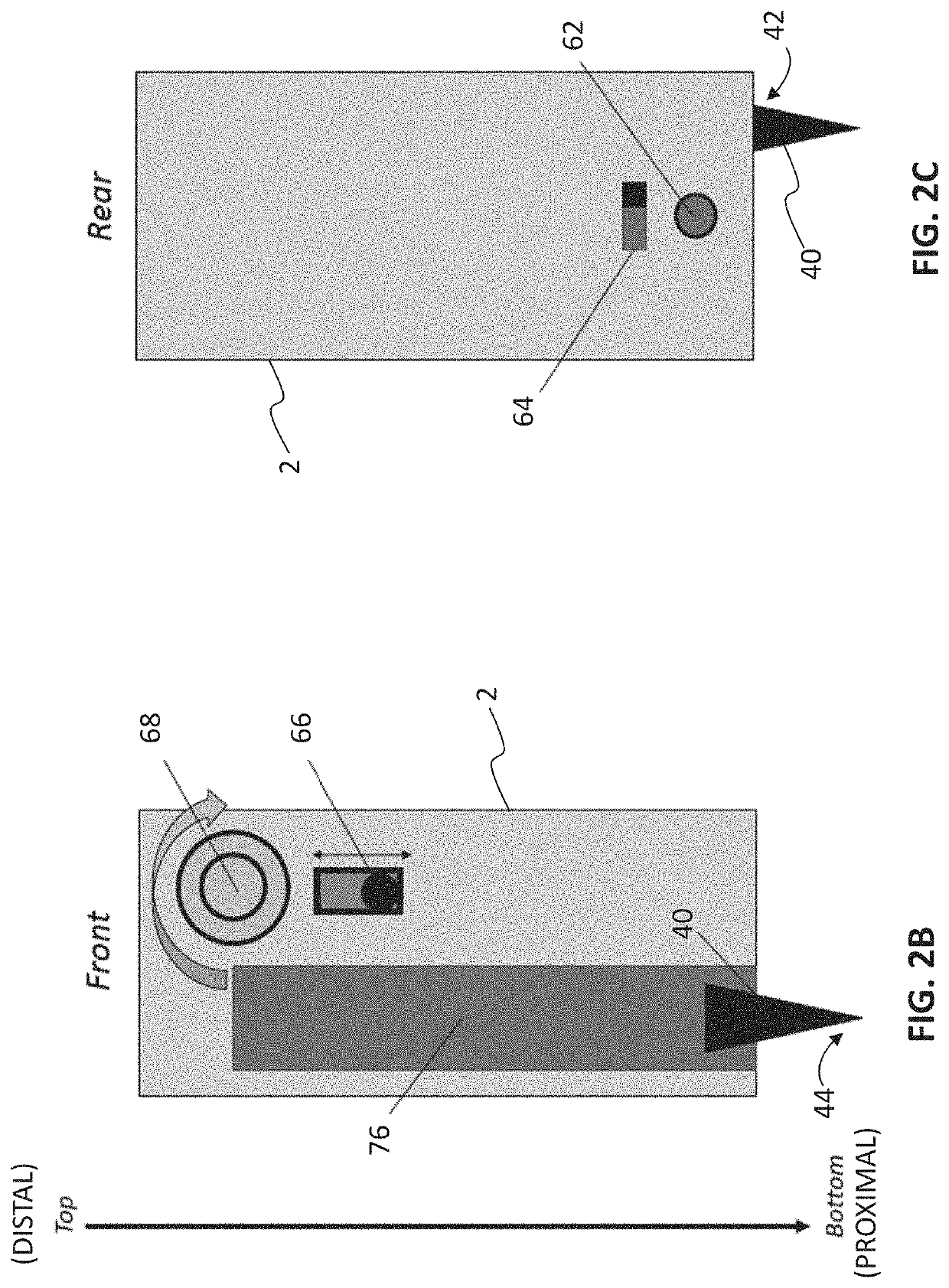Bioprinter devices, systems and methods for printing soft gels for the treatment of musculoskeletal and skin disorders
- Summary
- Abstract
- Description
- Claims
- Application Information
AI Technical Summary
Benefits of technology
Problems solved by technology
Method used
Image
Examples
example 1
[0070]In an embodiment a pen printer is provided. The pen printer is a device that can be used to print polymer hydrogels for in situ application, and can be easily operated using simple mechanical controls to extrude gels at a consistent rate. This flow can be customized to the desired flow rate. The gels are first loaded into a syringe and placed into the pen printer, where it is then extruded using electrical actuators controlled by a stepper motor. The stepper motor slowly pushes the back of the syringe towards the front, pushing the gels out. Because the gels are loaded into a standard Luer-lock syringe, the nozzle of the syringe can be optimized to the gel being used, using gage syringe tips or tapered tips. While this application can be used across a wide range of hydrogels, current hydrogels may include chitosan / alginate and GelMA-based hydrogels.
[0071]Chitosan / alginate gels are being researched for their structural and antimicrobial properties in skeletal muscle tissue appl...
example 2
[0079]Current strategies for the treatment of VML injuries require acute stabilization of the patient, followed by delayed extremity reconstruction. Reconstructive operations include the implantation of autologous or allogeneic tissues. (13) Tissue engineering strategies, which have not yet been utilized in clinical practice, would also require a second surgical procedure to be implanted. However, an inflammatory reaction and loss of myogenesis factors following VML limit the regenerative capacity of the injured skeletal muscle. Without rapid intervention, the healing response of the body results in fibrosis rather than functional restoration of composite muscle tissue. (3) A robust strategy for VML treatment was created that can be utilized quickly, without the need for access to sophisticated surgical tools. FIGS. 9A-9D illustrate the utilization of a handheld bioprinter for in situ printing of scaffolds. FIG. 9A is a schematic diagram of the in situ bioprinting of cell-laden GelM...
example 3
[0082]The physical and mechanical properties of GelMA can be changed by varying the degree of methacrylation, prepolymer concentration, temperature, photoinitiator (PI) concentration, and the light exposure time and intensity. (37) In the disclosed handheld partially automated bioprinting system, each of the bioink input variables was selected to match the necessary biological and mechanical properties of native skeletal muscle. Following established literature, the use of medium level methacrylate GelMA is mechanically and biologically suitable for muscle tissue engineering applications. (35) The lithium phenyl-2, 4, 6-trimethylbenzoylphosphinate (LAP) was used as the PI, and its concentration was selected to be 0.067% (w / v) following the previous literature. (37) The exposure time selected for printed scaffolds was 20 seconds (the estimated time that printed hydrogels are directly exposed to light). The light wavelength was 365 nm with a flux of 120 lumens at an emitted distance o...
PUM
 Login to View More
Login to View More Abstract
Description
Claims
Application Information
 Login to View More
Login to View More - R&D
- Intellectual Property
- Life Sciences
- Materials
- Tech Scout
- Unparalleled Data Quality
- Higher Quality Content
- 60% Fewer Hallucinations
Browse by: Latest US Patents, China's latest patents, Technical Efficacy Thesaurus, Application Domain, Technology Topic, Popular Technical Reports.
© 2025 PatSnap. All rights reserved.Legal|Privacy policy|Modern Slavery Act Transparency Statement|Sitemap|About US| Contact US: help@patsnap.com



